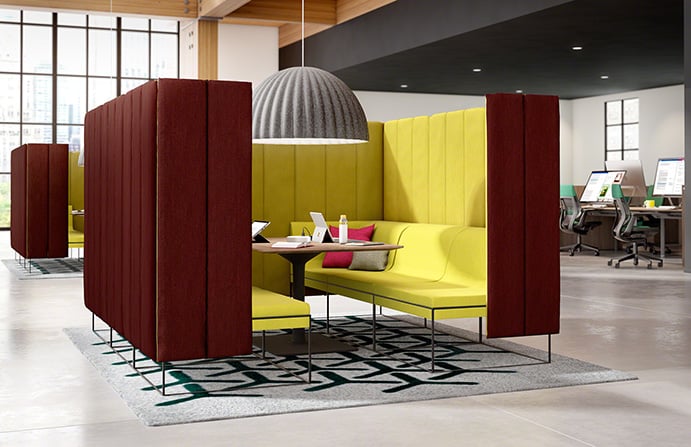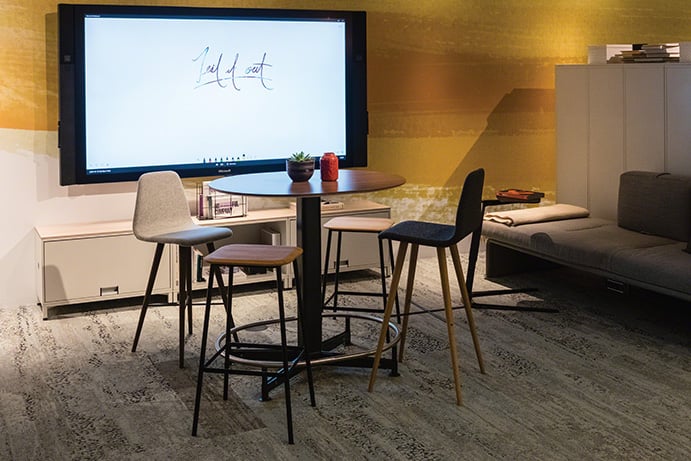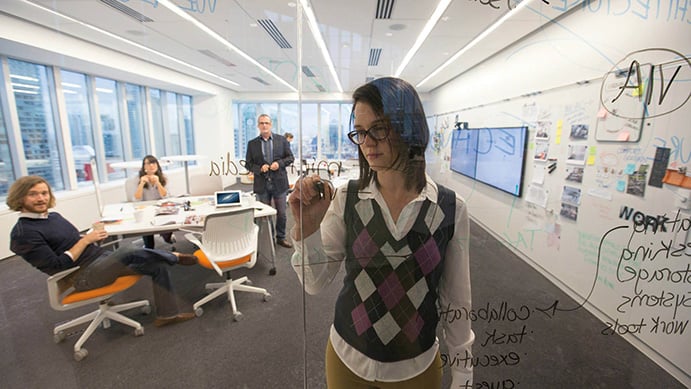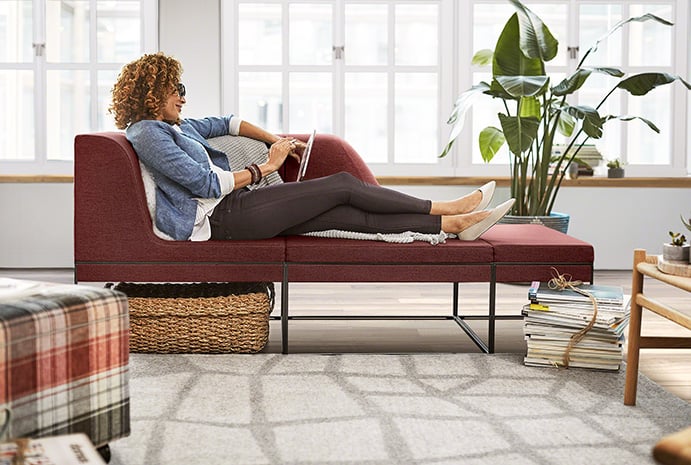According to IPSOS and Steelcase research, satisfaction with the physical workplace directly correlates with levels of employee engagement. But what is the true value of this engagement to an organisation and exactly how does workplace design impact on it?
What is employee engagement and why does it matter?Engagement is the level of enthusiasm and dedication an employee feels toward their job; the passion and commitment they have for the role and the company they work for. It includes the extent to which they engage and identify with the company’s mission and values, as well as their desire to contribute to its current and future direction, productivity and success.
Engagement is a powerful influence - it contributes to a positive work culture; to wellbeing, creativity, productivity and growth. Disengagement, on the other hand, sustains a negative work culture, destroys creativity, impedes productivity and tends to inertia
But how does the physical working environment feed into these feelings and behaviours?
Engaged employees have more control over their experiences at work
In the first place, the IPSOS/Steelcase research points to a strong and understandable correlation between control over basic elements of the working environment (temperature, ambient noise, light, ventilation and seating comfort) with levels of happiness at work and general job satisfaction. The happier we are, it concludes, the more engaged with our jobs we will tend to be.
But the research points to more profound ways in which the working environment contributes to levels of employee engagement.
The study suggests employee engagement in the modern office hinges on our ability to balance intense thought based tasks, collaborative activities and moments of reflection throughout the day to keep us focused and working at our creative best.
This kind of control prioritises the cognitive, physical and emotional wellbeing of the people who use an office. And it’s a fundamental requirement for facilitating the demanding cerebral and collaborative work that characterise the myriad work challenges of the modern workplace.
The ability to control environments, choosing where and how we work, therefore, supports a more innovative, diverse and energised workforce that can be fostered or inhibited by specific workplace design choices.
How workplace design features can maximise employee engagement
From the small but significant features of the desk and seating solutions, to the way you design your meeting rooms and integrate technology into them, all these decisions can impact the wellbeing and engagement levels of your most valuable asset - the people you work with.
Design to support changing postures
Modern work requires us to be able to shift postures throughout the day. Being tied to a desk in a sitting posture for hours on end is bad for our health, our creative thinking and our productivity.
Task chairs and adjustable height desks can maximise user comfort as well as support sit/stand strategies to vary posture. At the same time, giving access to mobile technology (laptops and tablets) can free users from using tech in only one particular setting and attitude.
In collaborative working settings, seating should support a range of postures to reflect the different ways they are used - from more relaxed group work sessions to focused morning standups. Desired postures in these different settings might include reclining, sitting, standing or perching. In stand-up sessions impediments to sight lines such as low hanging lamps should be avoided.
Design choices should help us connect, liberate us from silos and let us choose - instead of blocking, constraining and restricting.
Design for ‘presence’ and ‘privacy’
The Steelcase study concludes we need the ability to flow and move seamlessly between different kinds of team-based and individual activities if we are to be truly engaged with the different demands of our working day.
In the agile world we need to move between different states of physical and mental presence easily and quickly. We may need to be present in group meetings, but divide rapidly off to pursue detailed work in twos, threes or on our own. We might need to quickly switch from buzzy group work to private, uninterrupted study and thought. Flexible meetings rooms with furniture and partitions that can be shifted and rolled away can help workers move swiftly between different kinds of work; office pods and booths can control acoustics and provide havens within otherwise noisy and distracting open plan offices.
 Design for flexible working
Design for flexible working
Spaces should enable quality interactions with remote workers and teams that are distributed across continents and time zones. In a diverse workforce, there is pressure from younger people for businesses to support their preference to work outside the office, as well as a legal obligation to support those with family and other commitments who need to more effectively manage their work/life balance. But this kind of flexibility can also harness the creative and productive instincts of employees to work in the ways that suit them best.
Modern offices should be designed to accommodate the needs of a mobile and physically dispersed workforce - conference and video calling should take place in rooms with good acoustics and a field of vision that takes in everyone involved. Visiting remote workers need the ability to integrate quickly into the office when they are present, with desks and chairs that are simple to adjust.

Improve engagement for greater productivity
Handing control over their physical working environment to individuals and teams is not just about improving employees levels of comfort (vital though that is), it is about supplying the right conditions to support the kind of work they need to do.
If you want to improve the agility, productivity and creativity of your organisation, the research shows you should pay attention to how your workplace inhibits or enables levels of employee engagement.










